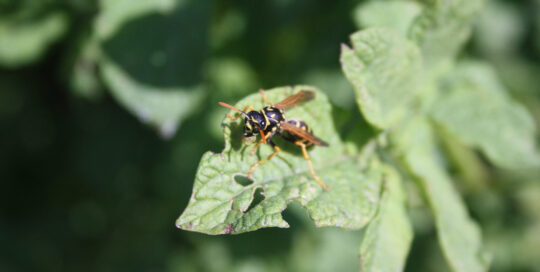How to teach your kids about the birds, bees, and other insects
Views: 3674

The boys caught an antlion so you can imagine the excitement level around here. For those who are not familiar with these terrifying looking creatures (even if their other name is doodlebug) they build small funnels that sweep insects to their death by the doodlebug that is waiting armed with sickle-like mandibles at the bottom of the pit. (Picture a scene from Star Wars.) As you can imagine, they are deadly to ants and other small insects so they’re a very good comrade to have in the garden. I was actually pretty thrilled with their find since you don’t often see them. This made me think of how important it is to teach kids to learn what’s around them, whether it’s the birds, insects, or plants.
We’ve all heard multiple times that people will protect what they love. This is true whether we’re talking about our National Parks or the insects that hang out in the garden. The trick is to enlighten the next generation to know what they see and understand its importance.
Obviously, the first step is being outside. Yes, you and your children can read a lot of books, and you should. However, everything makes so much more sense when you find it in person. Think about it, you can read about the workings of an ant hill, or you can watch it. What will you – and subsequently your children – remember the most? It will undoubtedly be the busy workings of the ants.
We went on a hike a couple of weeks ago to Sulphur Spring, where Capt. Lewis gave Sacajawea the water that supposedly helped heal her. With nearly 3 dozen people on our little journey, several times half the crew bunched up. An adult went running up to the group to see if someone fell. Nope, it was a caterpillar. Or a ladybug. Or some other creepy-crawly that caught their eye. The kids certainly enjoyed the springs, but these little highlights made the trip.
Do a little research. We have innumerable resources at our fingertips, whether you Google a particular species or want to watch an ant battle on YouTube. I also frequently check the Audubon website for bird songs since one of our goals is to learn the songs of our local birds so we can find them without even spotting them! There are also lots of excellent apps for your phone so you can identify animals, birds, plants, and insects. Once you understand what the insect or bird is doing, or what they’re eating, you’ll appreciate them even more. And don’t forget good old-fashioned books. We have stacks and always seem to find something new and interesting in them.
Be part of something bigger. When you participate as a citizen scientist, or simply an enthusiastic observer, it gives what you notice more weight. One of the easiest programs is the Great Sunflower Project. Participants can plant a “Lemon Queen” sunflower and count the pollinators on it on different occasions, along with other ways to make a difference. Or sign up for any of the bird counts hosted by the Audubon Society. This is a great way to take a moment to see what birds are in your area, and offer these observations to scientists so they can better understand the impact of climate and the changing landscape and what it means to our feathered friends, which is important to all of us.
These are just a few ideas you can use to encourage your kids, and you, to notice what is happening around your home and garden. Too many times we zip through life without looking. When we understand what is happening around us, we can save what we love and reap the benefits in the garden.
Meet Amy Grisak
Amy is a freelance author and photographer in Great Falls, MT who specializes in gardening, foods, and sustainable agriculture. She provides information on every kind…
Amy's Recent Posts

Looking into the Crystal Ball for a Pest Report








